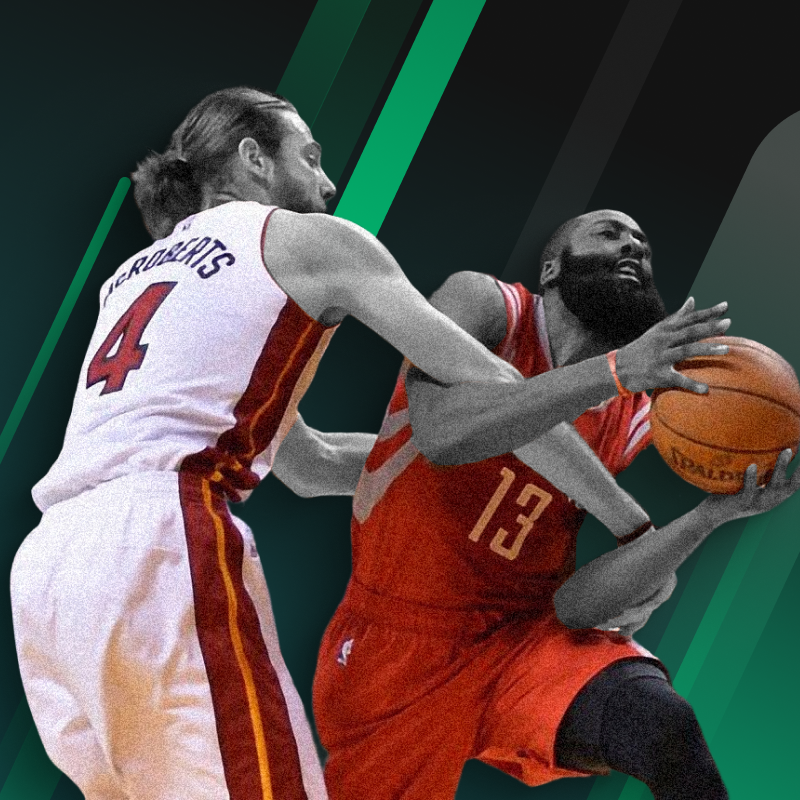Overflowing Baskets: How Scoring Has Evolved in the NBA?


1.0
Default
Scoring has always been the main goal when it comes to playing in the NBA, and there is no question that players have worked hard to define the scoring over the years with impressive performances night in and night out. But how has it evolved from the early days of basketball all the way to the current NBA season?
It is worth noting that the NBA is a game of both defense and offense, and the league has worked hard to ensure that they will get the chance to address the needs of both sides and create a balance in the game so that neither overpowers the other. This has led to the implementation of certain rules that have kept both sides in check. In light of the recent scoring outbursts this season, it seems that the NBA is keen to see some changes ahead.
Scoring in the NBA is simple, you just have to shoot the basket on the corresponding spot on the floor, whether it is a layup or a jumper inside the arc, then it is good for two points, anywhere from beyond the arc is good for three points. In addition, foul shots are given as “free throws” for players to shoot twice or thrice depending where they are fouled by opposing players, and these baskets are good for a single point. Over the years, the NBA has made changes to these rules by amending the league’s operation and existing rulebook to further accommodate the offensive and defensive side of the game.

This included the creation of the free throw before the 1954-55 season, which was then called a “three to make two” situation for players to shoot their own free throws. This was later amended in the years to come, such as players needing to have both feet behind the charity stripe before shooting, and extending the penalty to flagrant fouls, shooting fouls, and other calls that were deemed too unnecessary for basketball contact.
The three-pointer was adopted by the NBA in the 1979-80 season, which further allowed offensive players with incredible shooting talent to shoot from afar, nullifying defenders in the paint and perimeter. This has forced players to adjust their guarding positions, and it further innovated the offensive game. Over the years, the three-point field goal continued to be a powerful weapon in the league, and it cannot be denied that it continues to have an impact today.

Scoring has become more proficient over the years. We have seen a spike in the points-per-game recorded for individual players and even teams as a whole. It can be remembered that Wilt Chamberlain’s single-game record of 100 points proved to be an untouchable record, as no other player ever came close to matching that tally – and the late Kobe Bryant had the closest attempt to do so by scoring 81 points in a game back in 2006. This has set the bar for scoring in the league over the years, but also defined how hard it is to score in the NBA. So how has scoring evolved with various changes in the league?
Defensive 3-second violations, kick-ball violations, blocking fouls, all of these were amended to further accommodate the changes of offensive strides in the league. In 1947, the NBA banned zone defense, which was the act of defensive players only having to guard a set position on the floor and not a player. This led to the rise of Bob Pettit, Dolph Schayes and other players who were efficient at moving around the floor to create offensive opportunities. The ban on zone defense was amended and then completely removed by the 2001 season, which has then made it a critical part of modern basketball as zone defense is usually applied by many teams in the league.

The 1954 season also saw the introduction of the shot clock, which only gave 24 seconds for each offensive team to shoot the ball. Whether it was the pressure of shooting the ball or the tactical control of the game clock that was prioritized, the NBA’s points per game saw a 19-point jump from 79.4 in 1954 and then 93.1 points per game in 1955.
Perhaps the biggest adjustment was the hand checking, which was the defenders’ way to leave a hand on the on-ball players to further impact the play. This allowed a lot of star players to capitalize easy shooting as the “high-five” rule didn’t get amended until the 2010s. Fouls were also called if defending players hampered the landing of shooting players, which further shifted the rules into the favor of scoring players.
Let’s be frank here, the referees play a huge role on how referees’ calls on defensive players are being inclined in favor of offensive players. Moving screens are now called as turnovers, yes, but referees don’t spot them everytime, especially when the 2015 Golden State Warriors innovated that play.

Of course, foul baiting, which sees shooting players pump-fake a shot and then move their bodies to initiate contact to get it called in the act of shooting, played a huge role on players exploiting foul calls to score points.
James Harden made a record for most free throws made in a single game, going 24 for 24 in his attempts back in December 2019. Harden is one of many players who became tagged as “foul merchants” in the NBA, who had the skill to draw contact from defending players and earn their points from the charity stripe, leading to a surge in scoring over the years as many other players repeated the same tactic and got efficient with the way they score the ball on top of that.
Stephen Curry’s 2014-15 season was something to remember. He led the Golden State Warriors to their first NBA title for the first time in 40 years. Of course, that wasn’t the big change, it was the Warriors’ integration of Steve Kerr as their new head coach, who innovated the Warriors’ system to allow Curry to play at a faster pace and more freedom to shoot – and he broke his league record of most threes made in a season in that same run and even sat out a total of 17 fourth quarters that season thanks to the Warriors’ huge margin of victories. The same story was seen in the next season as Curry then led the Warriors to finish with a 73-9 record, win the MVP for the second straight year, and being the first to win unanimously.

Curry’s evolution has sparked a massive change in the league – with more teams attempting three-pointers after the 2014-15 season and even the Houston Rockets – one of their rivals at the time – assembling a roster that had all-guards to accommodate three-point shooting. Of course, the culmination of that was seen in the Warriors’ Game 7 win over the Rockets when the latter team went on to lose the game by nine points after missing 27 threes in a row. Teams have still applied this same mentality of having a lot of shooting from deep.

This has also influenced the up-and-coming rookies of the NBA, most notably Chet Holmgren of the Oklahoma City Thunder. Holmgren is a 7-foot big man who shoots from three at 40%, and his length has allowed him to innovate the game with his shooting – further stretch the floor and create better scoring opportunities for himself and his teammates. As proof of that, since Holmgren entered the Thunder’s lineup, OKC has jumped from being a Play-In team into a contender for the first seed. Of course, Holmgren’s co-rookie sensation Victor Wembanyama – a 7-foot-4 phenom, has the same skill set albeit at a much lower percentage (31% 3pt).
The 2023-24 season has played a huge role in sounding the alarm for the league’s concern of scoring being so easy in the NBA right now. For starters, there has been a total of 15 50-point games in the 2023-24 season alone, with these bursts coming from league leaders such as Joel Embiid, Luka Doncic, Stephen Curry, Karl-Anthony Towns, and many more. It proved to be easy to score 50-point games now and then, and it is not even a point of discussion as to how these players have been quite efficient throughout the campaign.
Let’s not forget that none of these 50-point scorers are the leader in points total this season. Shai Gilgeous-Alexander of the Oklahoma City Thunder, who averages 31.1 points per game, has the most points in the season overall, despite being second in points per game this season. On top of that, he has not scored any 50-point games this season so far, which proves how big scoring has changed over the years. The influx of scoring has become even more in favor of the offensive end, which has raised eyebrows when it comes to those fans and critics who are more in favor of seeing a balance between offense and defense.

As the NBA hopes to address the issue regarding the lack of competitiveness in the All-Star Game, and the scoring surge from players this season, it seems that there will be no way that the NBA can implement any rules to change for that matter. The game will inevitably continue to evolve from time to time, and we have to be fair that offense has not been favored all the time. We will have to wait and see what the future holds for the NBA as they try to come up with even more changes that will favor both sides.
Make sure to stay updated on everything about the NBA and the rest of the sports world! GambleSpot provides the best blogs, predictions, strategy discussions, and many more content that will be able to help you in putting up the best wagers! Don’t miss a single beat with us today!

August 12th, 2025
Can the Florida Panthers Pull Off a Stanley Cup Three-Peat in 2025?
August 12th, 2025
Wrexham's Championship Odds for 2025 – Can They Secure Promotion?
August 10th, 2025
Best Wide Receivers to Watch in the 2025 NFL Season
August 6th, 2025
Serral Net Worth 2026: How StarCraft's Champion Built His Empire
August 4th, 2025
NBA 2025–26 Season Awards – Who Will Take Home the Honors?
July 31st, 2025
Novak Djokovic Clears the Air on Retirement Rumors
July 29th, 2025
NiKo's Net Worth in 2025 – How the CS:GO Star Built His Esports Fortune
July 29th, 2025
Wrexham's Epic Rise: Can They Reach the EPL in 2025?
July 23rd, 2025
Tempest Rising Review – A Nostalgic RTS Comeback
July 22nd, 2025
Chris Paul's Last Dance: A Career Defined by Brilliance and GritAre you sure?
This will delete all chat history, and I will not remember what we were talking about.
✔
Todays Hot Deals